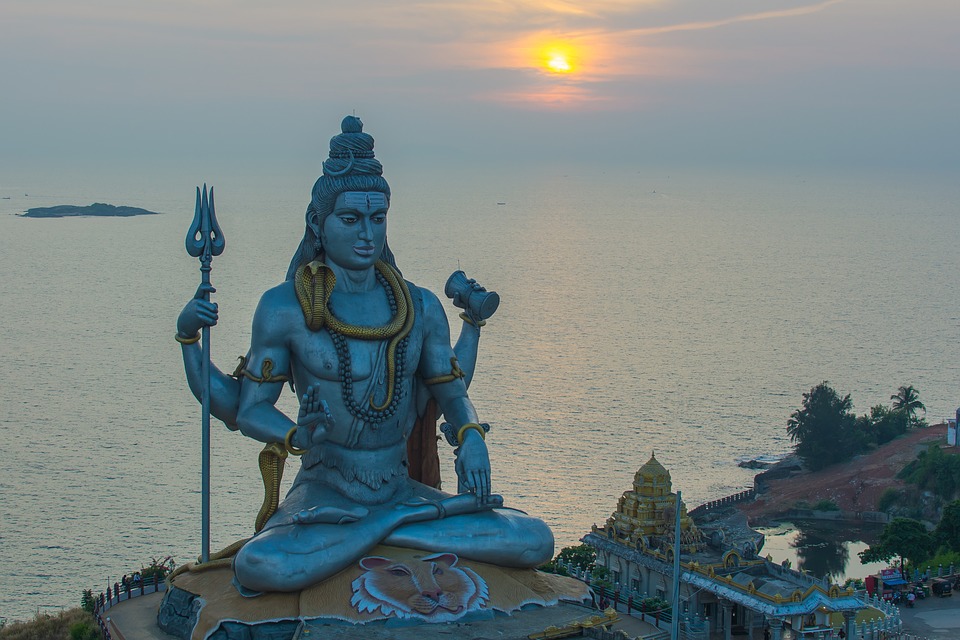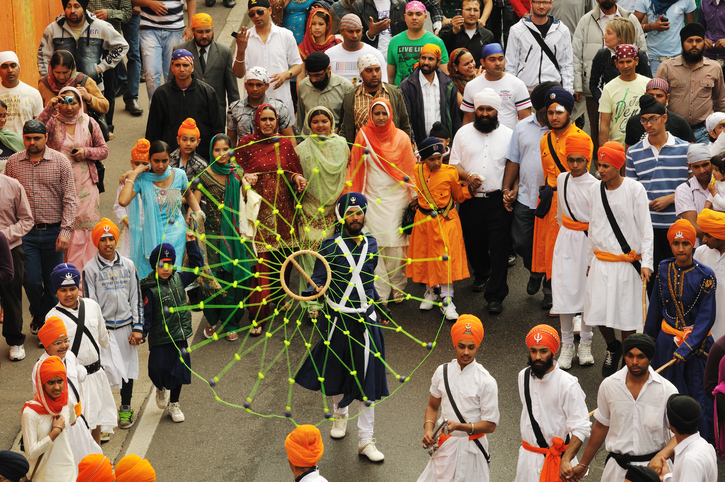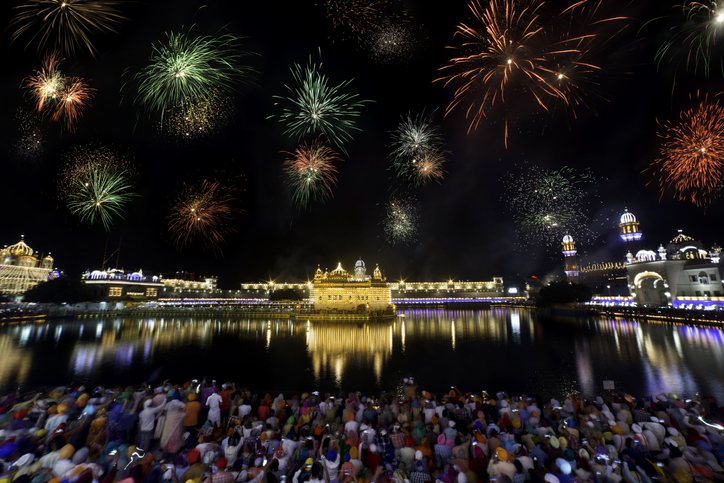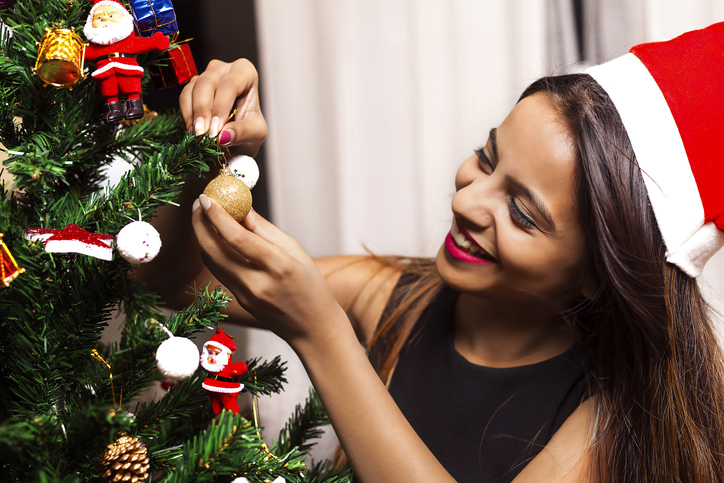India is a vibrant and culturally rich country, one where hundreds of festivals are celebrated throughout the year. For those looking to visit during one of them to have an immersive experience where they can observe, or even participate in them, here are some of the most popular festivals in India:
1Makara Sankranti (January)

Widely celebrated across the country, especially in Northern India, this festival marking the end of the winter months and the start of longer days. As it is a celebration of the sun, it is observed according to the solar cycle. This is unlike most festivals in India which are set by the lunar cycle. Makar Sankranti usually has a fixed day (14 January), and the festivities include kite flying, bonfires, dancing, and delicious sweets.
Where to experience it: Anywhere in North India
Also Read: 16 Mouth-Watering Indian Desserts You Have To Try
2Pongal (January)

Pongal is a festival corresponding with Makar Sankranti, that is celebrated in parts of Southern India, particularly state of Tamil Nadu. Like Makar Sankranti, it is a harvest festival dedicated to the sun. Celebrations are spread across four days (usually 14-17 January), and include dances, bonfires, and cattle races, while houses are often decorated with rangolis – designs made with coloured rice powder.
Where to experience it: Tamil Nadu
3Basant Panchami (February)

Celebrated in late January or February, Basant Panchami is a festival that is dedicated to the goddess Saraswati. It also marks the start of preparations for Holi, and the transition to spring. In fact, the festival is supposed to take place exactly forty days before the start of spring. It is especially vibrant in the state of Punjab, where people dress in yellow, like the flowering mustard fields and take part in kite flying games.
4Maha Shivaratri (March)

This festival is celebrated each year in honour of the deity Shiva. While there is a Shivaratri (literally “night of Shiva“) in every month of the Hindu calendar, this festival is a much grander affair. It occurs in late winter, before the arrival of summer, on what is said to be the night when Shiva and his consort Parvati were married. It is meant to symbolise the “overcoming darkness and ignorance,” and is usually a solemn affair involving chanting of prayers and fasting.
Where to experience it: Northern India (especially Varanasi, Haridwar, and Rishikesh)
5Holi (March)

Also known as “the Festival of Colours,” Holi is one of the most popular festivals in India. It is meant to mark the arrival of spring (and the spring harvest season), and the end of winter. Holi also marks the triumph of good over evil in the defeat of the demoness Holika, and religious rituals are performed in front of a bonfire, with the hope that evil will be destroyed in the fire as Holika was. People also celebrate by throwing and splashing water and coloured powders on each other. Holi is celebrated very enthusiastically in Northern India, though it is a more subdues affair in the south.
Where to experience it: Northern India (especially in Udaipur, Varanasi, Jaipur, Jodhpur, and Delhi)
Also Read: The 10 Best Places to Celebrate Holi, Both Inside and Outside India
6Baisakhi (April)

Baisakhi is a festival in both in Hinduism and Sikhism that welcomes the spring harvest season, and the traditional solar new year. For Sikhs, it also marks the day when their tenth Guru laid out the foundation of the Khalsa in 1699 and is thus also the first day of the Sikh New Year. It is usually observed on 13 or 14 April, and often enthusiastically celebrated by the Sikh community of Punjab, with folk dances, such as Giddha and Bhangra.
Where to experience it: Punjab
7Bohag Bihu (April)

Corresponding to Baisakhi is the Assamese celebration of Bohag Bihu or Rongali Bihu (it is one of many regional variations of the festival). Bohag Bihu usually takes place on 13 April, and marks the start of the Assamese New Year. It is spread over seven days, and includes traditional dances in village fields and courtyards, as well as a communal feast. Bohag Bihu is one of three types of Bihu celebrated in Assam, the others being Bhongali Bihu or Magh Bihu (in January) and Kongali Bihu or Kati Bihu (in October), each celebrating a different part of the agricultural cycle.
Where to experience it: Assam
Also Read: 5 Traditional Dishes Of Assamese Food To Try
8Eid-ul-Fitr (June)

Eid-ul-Fitr is a major festival for Muslims. It occurs after the sighting of the new moon that marks the end of the month of Ramadan. While Ramadan is spent in penance and fasting (broken after sunset with an iftar), Eid-ul-Fitr is celebrated with prayers, colourful feasts bazaars, and other festivities.
Where to experience it: All over the country
9Hemis Festival (July)

This two-day festival takes place in the stunning Himalayan region of Ladakh. It marks the birth anniversary of spiritual leader Guru Padmasambhava, founder of Tibetan Tantric Buddhism. During this time, Ladakh’s Hemis Monastery is colourfully decorated, and features traditional dances to the tune of cymbals, drums, trumpets; including the masked ‘Chham Dance’ by the monks, depicting the triumph of good over evil.
Where to experience it: Ladakh
Also Read: Why You Should Visit Ladakh – A Ladakh Travel Guide
10Eid-ul-Adha (August)

Eid-ul-Adha is a major Muslim festival that celebrates the devotion of Ibrahim (or Abraham) and his willingness to sacrifice his son to God. It is often associated with the sacrifice of a goat, as before Ibrahim could sacrifice his son, God provided a lamb instead, which is why it is also called Bakr-Id. The festival also marks the end of the annual Hajj to Mecca. Festivities are spread over three days, and include delicious food and gift-giving.
Where to experience it: All over the country
Also Read: Witness the Best of Bakr-Id Celebrations in These Indian Cities
11Raksha Bandhan (August)

This popular Hindu festival is meant to celebrate the sibling bond between brothers and sisters. On this day, sisters of all ages tie string charms, called a rakhi, around the wrists of their brothers. This is supposed to be a symbol of protection; and in turn, the brother gives his sister a gift and promises to protect her.
Where to experience it: Anywhere in North India
12Janmashtami (August)

This annual Hindu festival celebrates the birth of Krishna, an avatar of the deity Vishnu. during the day, a fast is observed, along with the chanting of prayers and devotional songs; communities might even organize dramatic enactments of the life of Krishna (called the Rasa Lila or Krishna Lila). Especially vibrant festivities take place in Mathura, where Hindu tradition states that Krishna was born, and in Vrindavan where he is said to have grown up. In western India, the day after the festival sees another popular celebration, one known as Dahi Handi. Here, pots of yoghurt are hung high in the air, and groups of boys form a human pyramid to break the pot. This is meant to reflect a legend about Krishna, who is said to have delighted in stealing yoghurt and butter from the local cowherds.
Where to experience it: Mathura and Vrindavan, or western states like Maharashtra and Gujarat
13Onam (September)

An annual harvest festival from the southern state of Kerala, Onam is said to commemorate the day that the spirit of the ancient King Mahabali visits Kerala each year. Celebrations include events such as snake boat races (Vallamkali), tiger dances (Pulikali), mask dances (Kummattikali), martial arts displays (Onathallu), and a delicious and elaborate traditional meal (Onasadya).
Where to experience it: Kerala
Also Read: Exploring The Vibrant Festival Of Onam And How It’s Celebrated
14Ganesh Chaturthi (September)

This popular and colourful Hindu festival celebrates the birth of the deity Ganesha. Idols of the god are placed both in households and in various public places; and offerings of flowers, food and ghee are given, along with prayers for ten days. After the duration of the festival, the idols used in the festival are sent off with a “visarjan,” or immersion in a body of water.
Where to experience it: Maharashtra (especially Mumbai), and Karnataka
15Navaratri (September-October)

Spanning nine nights (and ten days), Navaratri is a festival celebrated throughout the country in the autumn and post-monsoon. The festival is associated with the victory of good over evil, and the divine goddess Devi.
In northern, central and western India, it celebrates the battle between the god Rama over the demon king Ravana, with performances of the “Rama Lila” and is synonymous with the festival of Dussehra that follows it. Especially famous are the Garba dances performed during the nine nights of Navaratri in the state of Gujarat. In the eastern and northeastern states, Navaratri is more closely connected to the victory of goddess Durga over the demon Mahishasura, often culminating in the festival of Durga Puja.
Where to experience it: Gujarat
16Durga Puja (October)

This is one of the most popular celebrations in the eastern states of India, and it usually coincides with Vijayadashami or Dussehra celebrated elsewhere in the country. The festival takes place over ten days, with highly decorated idols, dancing, singing, and prayers. On the tenth day of Vijayadashami, the idols are carried to a body of water, accompanied by a procession with drum beats and chants.
Where to experience it: West Bengal (especially Kolkata)
17Dussera (October)

Also known as Vijayadashami, the festival of Dussera is celebrated at the end of Navaratri each year. While in the eastern and northeastern states this day marks the end of Durga Puja, in other places towering effigies of Ravana (along with his son Meghanatha, and brother Kumbhkarana), which are meant to symbolise evil, are burnt with fireworks marking the destruction of evil.
Where to experience it: North India and Karnataka (especially Mysore)
18Diwali (Late October-November)

Widely celebrated, Diwali (also known as Deepavali) is the festival of lights. Celebrated almost a month after Vijayadashami, it is meant to symbolise the spiritual victory of light over darkness, and of good over evil. Homes, shops and temples are all brightly lit up for the five days of the festival, and people also burst fireworks and share delicious sweets.
Where to experience it: All over the country
19Gurpurab (November)

This festival celebrates the birth of the first Sikh Guru, Guru Nanak, and it is one of the most important for the Sikh community. The celebrations last for three days, and Gurdwaras are lit up during this time. Special langars (community meals) are also organized and people celebrate with processions, displays of martial arts, and singing hymns.
Where to experience it: Punjab (especially Amritsar)
20Christmas (December)

One of the most popular festivals from around the world, Christmas is a special time for India’s Christian community. Celebrating the birth of Jesus Christ, during the festive season churches are lit up and decorated and you will find Christmas trees in both homes and in public spaces.
Where to experience it: Tamil Nadu, Kerala, Goa, and Pondicherry
Also Read: 15 Unusual Christmas Traditions Around The World
Hopefully, this list will inspire you to book your next trip during these festivals in India, so that you can experience the celebrations for yourself. If you do so, remember to share your thoughts in the comments below.


